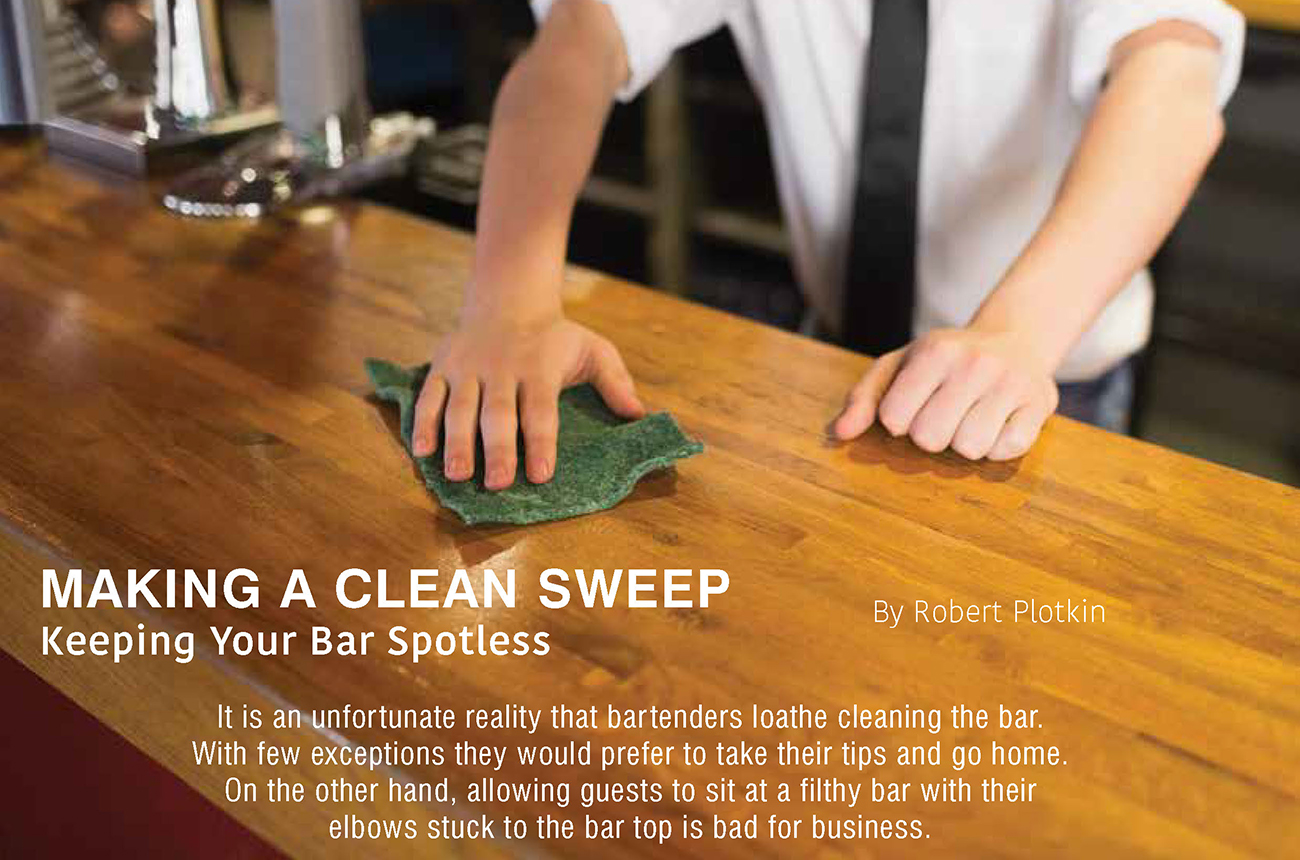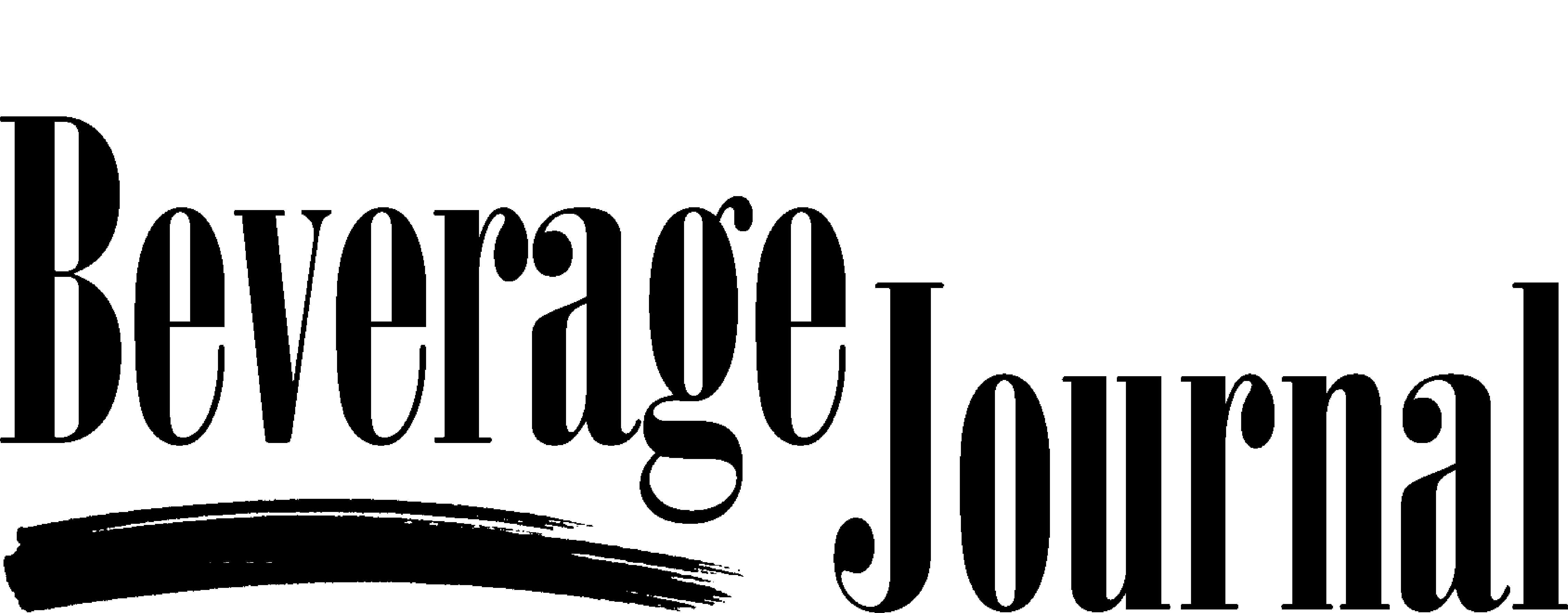Trending Articles ...
Keeping Your Bar Spotless
It is an unfortunate reality that bartenders loathe cleaning the bar. With few exceptions they would prefer to take their tips and go home. On the other hand, allowing guests to sit at a filthy bar with their elbows stuck to the bar top is bad for business.

Patrons will naturally presume that if the front of the house is unsanitary, the same is true for the back of the house, including the kitchen.
Maintaining sanitation standards behind the bar is hardly a glamorous thing. The same thing can be said, however, for the smell of stale beer and hanging glasses coated in dust. What you don’t want to have happen is for the health inspector to make the decision to clean the bar for you. If that occurs, there will be plenty of time to catch up on your cleaning while the front door is shut for a few days.
Sanitary standards are exacting and must be maintained both to stay in business and protect the public health. As if to add insult to injury, the results of an unsatisfactory health inspection are frequently published in the newspaper. The damage to the reputation of the business from this kind of adverse publicity is unfathomable.
Ensuring the bar’s cleanliness is an inherent managerial responsibility. It is extremely important that management institute regimented, carefully supervised sanitation procedures throughout the operation. Presuming that the employees will take it upon themselves to maintain the facility to the unwavering standards of the health department is an open invitation for trouble.
Short of getting on your hands and knees and doing it all yourself, how can you best ensure that the staff keeps the facility up to code? Here are some insights that will help you achieve the objective and save a trip to the chiropractor.
Opening and Closing Procedures
The opening and closing bar procedures assign specific tasks to each shift so that bartenders know what is required to properly open and close the bar. It is management’s responsibility to ensure that the staff follows the opening and closing procedures explicitly, many of which affect the sanitary conditions behind the bar.
The majority of the opening shift responsibilities involve ensuring that the bar is adequately stocked. Since the level of business during the day is usually slower than at night, there are more cleaning and maintenance chores assigned to the opening bartending shift.
The peak demand on the day bartender is usually at lunch time and again at “Happy Hour.” The time before lunch is spent stocking and getting the bar ready for business. During the one- to two-hour “lunch crunch,” the bartender will be expected to keep up with the sales demand. Once lunch is over and the bar area is cleaned, the day bartender should return to the process of “prepping” the bar.
The night shift experiences a completely different set of dynamics. Arriving in the late afternoon or early evening, the night crew is frequently busy immediately upon stepping behind the bar and often stays busy throughout the evening. Their closing duties primarily involve making sure supplies are put away and the bar is cleaned for the night. Liquor and beer stock is replenished and sales proceeds are deposited.
Bartenders report to work for the night shift about the time the bar is starting to get busy and they often have to start their shift “on the fly.” The night bartender(s) often only has time to switch out cash drawers, run a “z” report of the cash register or point-of-sale system, and start making drinks.
The closing duties at the end of the shift entail replacing depleted inventory and thoroughly cleaning the work station(s), the bar facility and all of the beverage equipment.
Weekly Cleaning Schedules
There are sanitation-related items behind the bar that require daily attention, and there are those things that can be adequately dealt with on a weekly basis. A complete listing of daily opening and closing responsibilities should be posted behind the bar.
The weekly cleaning schedule covers items not normally associated with standard opening and closing procedures. The entire bartending staff shares equal responsibility for seeing that these sanitation-related items are carried out on a consistent basis. To create staff accountability, each shift is delegated its share of the weekly cleaning schedule.
Items to incorporate on the weekly cleaning schedule may include:
- Wash the glassware shelves and netting and rotate the glasses on a regular basis. This will lessen the chances of the glasses sticking to the shelf matting.
- Clean the back bar liquor displays
- Clean all of the bottles behind the bar
- Check the water level in the condensation trays of the refrigeration units. Drain water if necessary
- Switch off the refrigeration units and clean the side grills. Ensure that air is able to circulate freely around units
- Clean the automatic glass washer, including the jets, filters, scrap traps, and wash arms.
- Check gas bottles for gas levels and leaks. Report any equipment problems to the appropriate service.
- Check the gasket seals on each reach-in cooler behind the bar. Check the seals to be sure they are not cracked, or worn out and cooler door closes properly.
- De-scale the bar sinks
- Remove and thoroughly clean all liquor pourers.
Sanitation Do’s and Don’ts
DO Clean Soda Dispenser Nozzle — Along with the holster it sits in, the beverage dispenser’s nozzle is a veritable breeding ground for bacteria and slime. It’s the first thing a health inspector will check behind the bar. Clean and soak the guns nightly.
DON’T Stack Glassware — Stacking glassware may be space efficient, but the practice doesn’t allow for air to circulate inside the glasses, which is a violation of health codes and sensible sanitation procedures.
DO Keep Your Hands Clean — Most bacteria is spread through physical contact and the hands are the chief culprits. Washing your hands may not sound exciting, but it does the trick.
DO Maintain Proper Cooling Temperatures — Thermometers must be placed in conspicuously in all coolers and refrigerators. A rise in temperature may cause bacteria to breed and certainly puts the inventory at risk.
DO Keep Floor Drains Clean — Floor drains are a necessary evil, but when they’re filthy, they’re also an ideal breeding ground for bacteria and can produce some pretty incredible odors.
DON’T Handle Ice — Ice sculptors and skaters are excused from handling ice, no one else. Ice is considered a food substance and should be treated as such. Using a glass as an ice scoop is a both a bad idea and a health code violation.
DO Keep Equipment Clean — Aside from being unsightly, dirty blenders and up-mixers pose a health hazard and can be expected to have a shorter useful life. Instituting a schedule for the regular cleaning of the mixing equipment will take care of the problem.
DO Drain Standing Water In Coolers — Condensation trays at the bottom of coolers and refrigerators pool stagnant water, perfect growing conditions for bacteria. The trays should be drained minimally every week.
DON’T Touch Rim Area of Glasses — Touching the top half of a service glass can contaminate it and get someone sick. Bartenders and servers should always only handle glasses by the stem or bottom half.
DO Post a Cleaning Schedule — Let the bartenders know what they’re expected to clean each shift. When it’s spelled out in black and white, accountability can’t be far behind.
Click Here to check out the entire article as it appeared in The Journal.

